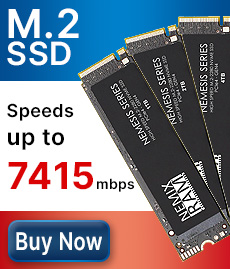If you have a PC, you'll no doubt be thankful for any opportunity that presents itself to give it a performance boost. And what better way to boost your computer's performance than with added RAM? With more memory to play with, your computer can do everything faster - it simply has more 'breathing room' to do what it needs to do. It doesn't help, though, if in the process of finding the most suitable memory upgrade for your computer, you simply find yourself being baffled
and overwhelmed by acronyms and specification sheets. After all, not all of us are the 'technical type'!
One of these acronyms that you may come across is DDR, which stands for Double-Data-Rate. Double-Data-Rate Synchronous Dynamic Random Access Memory, or DDR SDRAM or DDR RAM, is a type of very fast PC memory. DDR RAM shares the architecture on which it is based with SDRAM, but due to utilizing the clock signal differently, transfers twice as much data in the same amount of time. DIMM is another acronym you'll see often, referring to the DDR's dual in-line memory modules.
DDR2 based systems began to be produced by manufacturers in mid-2004, and represent an evolution of the DDR architecture. They deliver faster speeds than DDR, with bandwidth of 5.3GB per second or more. DDR2 supports improvements in chipsets and other system components and increases system performance to the point where data rates of 667MHz or more are possible. Its dual channel systems reduce system latency time and process memory more efficiently. It better handles the now increasingly common
memory-intensive applications of today's computer systems and also has lower power consumption, lower operating temperatures and a lowered operating voltage of 1.8 volts, compared to DDR's 2.5 volts and SDRAM's 3.3 volts.
The only question that is left to answer, then, is how DDR3 internal memory systems differ from both DDR2 and DDR. What isn't true is that DDR3 is simply a faster version of DDR2, which is actually one of the most frequently spread pieces of misinformation about the technology. It does, however, further improve on DDR2 in certain shared areas. Its fabrication process is further refined, meaning that its integrated circuit (IC) module is more efficient. It also has DDR2's same DIMM
profile and overall appearance, despite lacking the same key placements and pin connections. Technically speaking, however, there are no more similarities between the two.
So, what are the differences with the DDR3 memory standard? Well, its features include support for system level flight time compensation. DDR3 also improves over DDR2 in that it offers an increase in higher bandwidth performance, up to 1600 MHz. It also has a DIMM-terminated 'fly by' command bus, and is constructed with high-precision load line calibration resistors. There are further improvements in terms of power consumption and operating temperatures, too: DDR3 offers greater
performance at low power input, while its enhanced low power features also conserve more energy. Finally, the DIMM is now operated cooler thanks to an improved thermal design.
DDR RAM is generally intended for processors 1GHz and faster. You'll see certain designations of DDR RAM, from PC1600 DDR SDRAM to PC3200 DDR SDRAM, which refers to particular FSB and CPU speeds. Different schemes are used by AMD and Intel to designate processor speed, and it can be confusing to work out the various technicalities involved in RAM designations and standards, so don't be afraid to find a memory upgrade online store that can advise you on the right DDR, DDR2 or DD3 system
for you. Before you purchase memory, take a look through your motherboard manual to see what RAM type is compatible with your own system.
To find out more about DDR, DD2 and DDR3 technology from the PC and Apple memory experts at Data Memory Systems, just visit http://www.datamemorysystems.com.
http://www.wisegeek.com/what-is-ddr-ram.htm
About Data Memory Systems: The Data Memory Systems' team wants to provide the best possible quality PC memory and Apple memory at the lowest prices. They offer great service and value for your money. Whether you have a Dell, HP, Sony, IBM or Apple Mac system, they have the compatible memory for your device.









